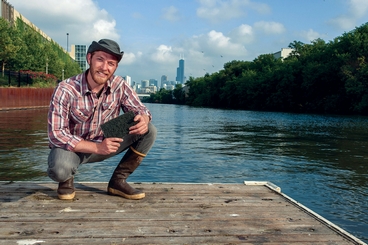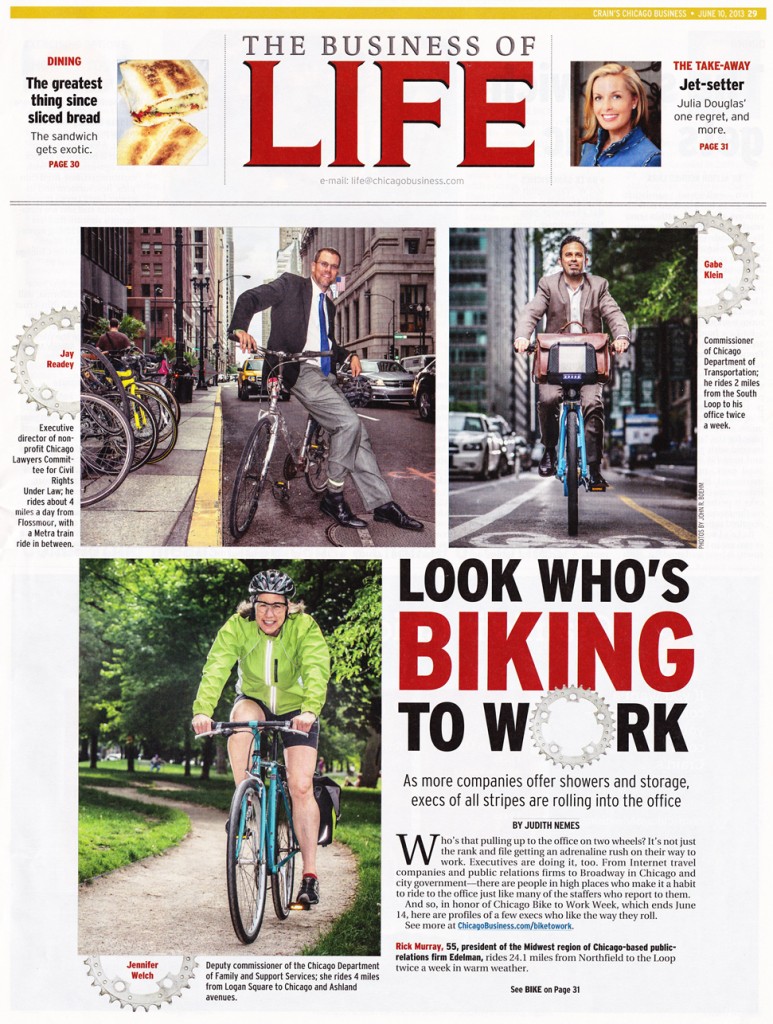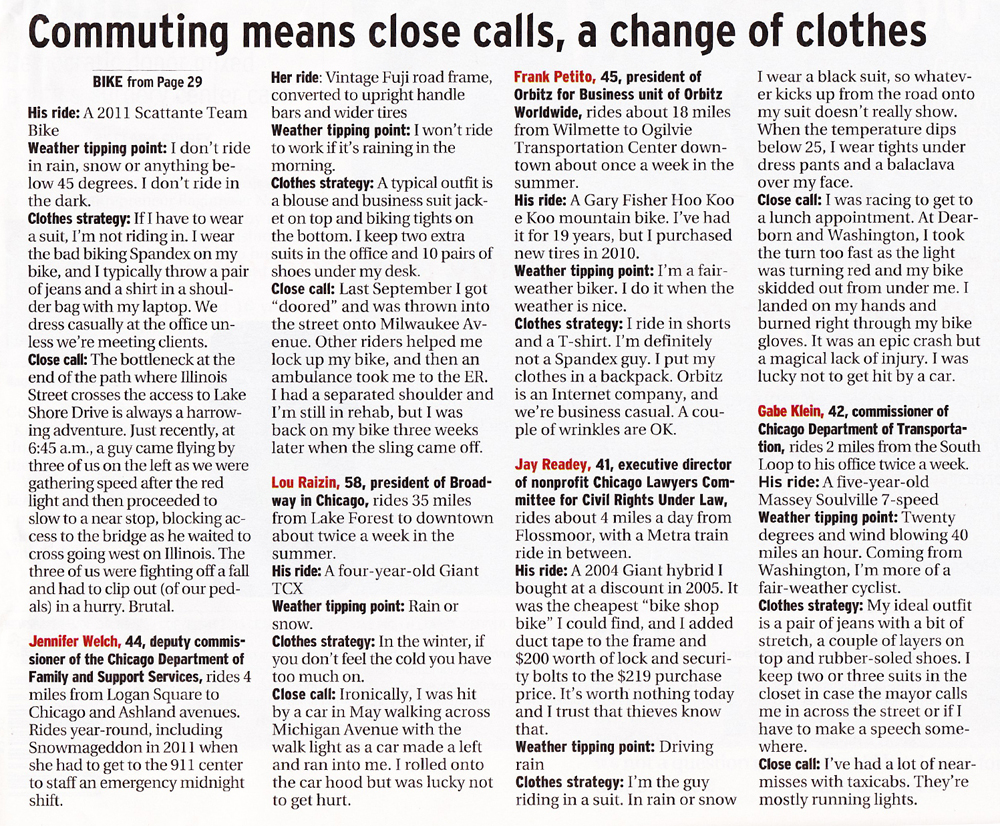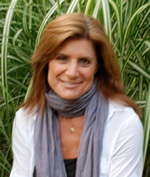Published in Chicago Grid/Chicago Sun-Times on December 5, 2013
The Natural Resources Defense Council’s new office has just raised the bar on what it means to be green in Chicago — or anywhere else, for that matter.
The nonprofit environmental advocacy group was awarded coveted LEED Platinum certification for its Midwest office in the Civic Opera Building, meaning it met the U.S. Green Building Council’s toughest checklist of energy efficiencies and other measures. That’s a highly respected achievement with lots of street cred in the environmental community and among savvy green consumers.
But the NRDC went one step further. Its retrofit project was the first to receive a more rigorous third-party certification from a group that’s aiming to push the sustainability envelope well beyond the criteria for LEED, or Leadership in Energy and Environmental Design.
The International Living Future Institute established the Living Building Challenge several years ago and just awarded the first office retrofit certification to the NRDC for achieving the requirements in three of the seven ambitious categories that it defines as demonstrating a deeper commitment to eco-friendly design, performance and beauty.
“We’re doing a huge amount of work with the city of Chicago on retrofitting commercial and residential space so they’re sustainable and energy efficient,” says Henry Henderson, director of the NRDC’s Midwest office. “We felt a real responsibility to put some skin in the game instead of just talking about what other people should do.”
The 7,800-square-foot makeover was led by Studio Gang Architects, a Chicago-based design and architectural firm known for sustainably designed buildings and interiors.
Transforming the interior of a historic 1929 building had many constraints. NRDC couldn’t rip out bathroom plumbing or completely replace the heating and cooling systems, Henderson says, adding that other energy-efficient and water-saving modifications were still possible.
For the challenge, the agency instead focused on other areas where it could meet the all-or-nothing requirements. The NRDC included interior furniture and finishings that are free of certain chemicals and hazardous materials, and artwork and other aesthetic details that reflect the region’s natural environment and boost employee productivity and sense of well-being.
Though many homeowners who build green aren’t concerned about validating their efforts with external awards, a growing number of environmentally conscious nonprofits, corporations and building owners value these designations. They look to these third-party certifications to demonstrate transparency of their sustainable building and design efforts, says Amanda Sturgeon, vice president of the Living Building Challenge. It’s a shorthand way of telling the world they really mean it when they say they care about leaving a softer footprint on the planet.
Only four buildings have received full certification from the Seattle-based institute that formed in 2006 with a goal of establishing the most rigorous green building certification program in the world, according to Sturgeon, who oversees the LBC.
The program has gained some measure of notoriety.
“This is not for the faint of heart,” asserts Andrea Cooper, a sustainability consultant at WMASustainability Solutions Group, the Chicago consulting firm that collaborated with Studio Gang’s design team to meet the Living Building Challenge criteria for the NRDC. “Applicants can’t pick and choose from a menu of options or points the way they can with LEED. With the Living Building Challenge, you have to do everything for the specific certification you’re trying to get from them.”
Full certification requires that a building produce more energy than it needs over the course of a year and only use materials for its interiors that are free of a long list of harmful chemicals and materials, Sturgeon says. So far, 172 projects have been registered with the institute to participate in the challenge, with many applications from California, the Pacific Northwest and British Columbia, she says. They also hail from as far away as Australia, New Zealand, France and Lebanon.
Groups submitting applications for retrofitted spaces within existing buildings typically apply for partial, or Petal, certification because they generally can’t control all measures related to water or make enough changes to generate all their own energy.
For the NRDC, the most daunting part of the process was finding furniture, doors, flooring and other interior finishes that didn’t contain hazardous chemicals or materials on the institute’s “red list,” Henderson says. The list includes formaldehyde, mercury, asbestos, polyvinyl chloride (PVC) and more. It was difficult to find new wood doors made without formaldehyde, so the NRDC instead opted for hollow metal doors and reused some wood doors that were free of anything on the red list.
The matter was further complicated: Scores of manufacturers won’t reveal the breakdown of their products because they just don’t know or they cite competitive concerns, Sturgeon says.
In the end, the extra effort was worth it.
“Because suppliers were required to declare the contents and manufacturing processes of each product we used, we were able to realize a healthier workspace for NRDC staff,” says Margaret Cavenagh, director of interiors at Studio Gang.
There also was great emphasis on the aesthetics of the workplace. An open layout was configured to maximize natural light for everyone by eliminating private offices near the windows. A living wall designed by Studio Gang was created along one corridor for native plants to grow. Hanging ropes were installed in central areas for more plants to climb toward the ceiling and clean the air by absorbing pollutants.
Creations from local artists were carefully selected to infuse the workplace with art that reflects the region’s natural environment. They include a Lina Bertucci photo of ice cover on Lake Michigan, and an aerial photo by Terry Evans of the oil boom in North Dakota, part of the NRDC’s Midwest territory.
One wall design by INDO, two Chicago artists who specialize in window displays using recycled materials, is an ongoing art installation composed of paper, scraps, envelopes and other used supplies from the office that would otherwise end up in a recycling bin or landfill.
“These are aesthetic pieces that reflect the core of our work,” Henderson says.
The Living Building Challenge isn’t meant to replace LEED, Henderson says. The LEED process emphasizes the functional operations of a given space, while the challenge is about sustainable changes that also affect how people work and interact within their built environment.
An NRDC spokesman declined to say how much the renovation cost, but added the challenge requirements didn’t lead to boosting the budget or delaying the completion timetable.
Cooper predicts the Living Building Challenge will become more popular as project teams learn of the certification program and the marketplace continues to incorporate more green building standards. The Living Building Challenge is planning a workshop in Chicago sometime next year.
However, Cooper expects LEED will continue to dominate the green building industry for now because there is more flexibility woven into that process. “The biggest hurdle (to taking on the Living Building Challenge) is the intimidation factor,” Cooper says half-jokingly.
Sturgeon admits the standards are so tough that designers and architects will be forced to consider green building in groundbreaking new ways. She also hopes it will push manufacturers to make dramatic changes in the products they offer.
“Part of the objective to LBC is to stir the pot and make market change,” she says. “Sometimes we’re asking people to do things that aren’t quite possible yet.”













